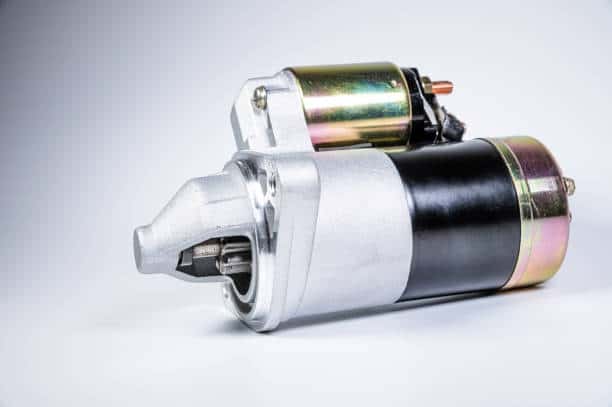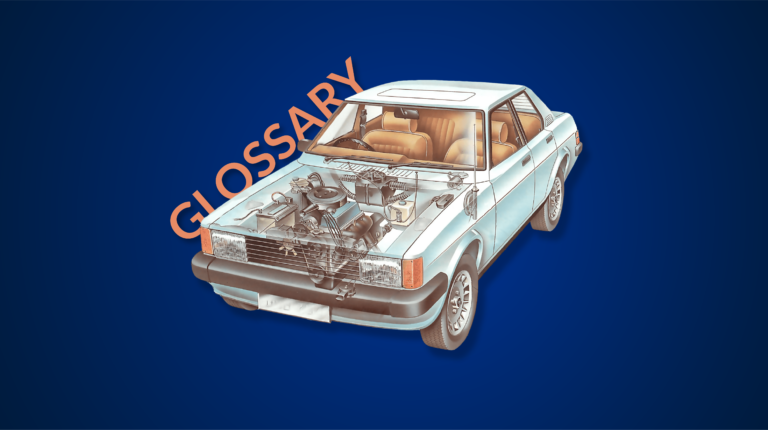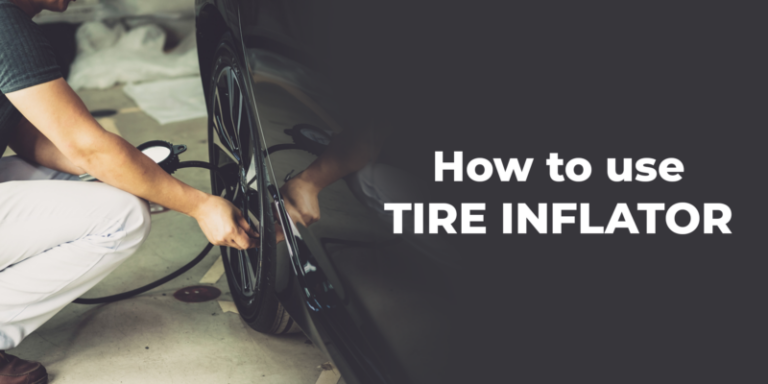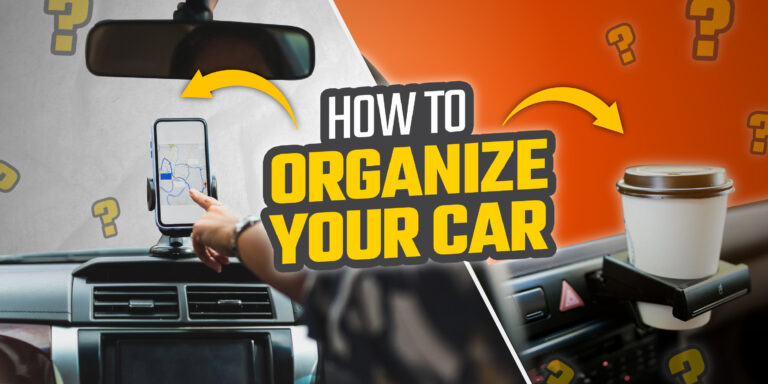
When you turn the ignition key, the starter motor is what gets your car’s engine up and running. It’s a vital piece of equipment, which is powered by electricity from the battery. Over time, the starter motor can wear out and stop functioning properly, leaving you in a tight spot when you least expect it. If you’re worrying about this problem, relax! Replacing a starter motor is not as complicated as you might think and you can probably learn a thing or two about cars in the process. In this guide, we’ll walk you through the process of replacing your car’s starter motor, step-by-step. We’ll cover essential steps on how to replace starter motor, so you can rev up your engine in no time.
The Role of a Starter Motor in a Car Engine
The starter motor is a component in an internal combustion engine that is responsible for starting the engine. When you turn the ignition key or press the start button, the starter motor meshes with the flywheel of the engine to spin it up to a certain rpm. Once the engine reaches that minimum speed, the fuel and air mixture in the cylinders ignites, taking over the job of keeping the engine running and continuing the reciprocating process. At this point, the starter motor automatically disengages from the flywheel, allowing the engine to continue running on its own power.

The starter motor is an electric motor that is powered by the vehicle’s battery, and it is typically located close to the flywheel and transmission, at the bottom of the engine. The starter motor consumes a lot of electricity which can quickly drain the battery if used for too long. The battery relies on the alternator to replenish its charge while the engine is running. Before 1912, when starter motors were not commonly used in cars, the driver had to manually turn the engine over with a hand crank. But technology has advanced since then, and these days we can hit the road with the press of a button.
The Importance of Replacing Your Starter Motor
Replacing a starter motor is something we should consider when it starts malfunctioning. A worn-out/failing starter motor can leave you stranded in the middle of nowhere. Let’s look at some common signs that indicate a faulty starter.
Slow Cranking:
If your engine takes a long time to fire up or makes a grinding, whirring or clicking noise when you turn the ignition, it may indicate a bad starter.Engine Just Won’t Crank Over:
Once the starter motor completely fails, the engine will not start.Clicking Sound:
If you hear a clicking sound when you turn the ignition key/press the start button, but the engine doesn’t turn over, it may indicate starter motor problems.Intermittent Starting:
If your engine starts sometimes but fails at others times, it may be worn out electrical components in the starter motor.
If you’re experiencing any of these symptoms, it’s wise to take a closer look at your starter motor and have it replaced or repaired as soon as possible to ensure the proper functioning of your engine.
Must Read Here What To Do When The Battery Light Comes On While Driving?
Steps to Replace the Starter Motor
Here are the general steps involved in replacing your old starter motor. Some car models may vary in their placement of starter motors, but you can use this as a guide to help you along the way. Refer to your service manual for specifications and advice.

Prepare the Workspace:
Gather the necessary tools and materials and keep them handy. You will need a toolset consisting of sockets, ratchets and screwdrivers. A pair of nose pliers will come in handy for electrical connectors.
Take the Necessary Safety Precautions Before You Start Working:
Wear insulating gloves and safety goggles for protection. Remember to disconnect the battery before starting electrical work to prevent shocks.
Use a hydraulic or manual jack to lift the car and expose the starter motor.
Remove the Old Starter Motor:
- Locate the starter motor: It can be found near the flywheel, typically over the transmission.
- Remove the electrical connections attached to the starter motor and battery. You may have to dismantle certain wires and cables from the assembly.
- Remove the retaining bolts which are used to hold the starter motor in position. Gently remove the clips.
- Take out the old starter motor, and keep it aside for either repair or disposal.
Install the New Starter Motor
- Check that the new starter motor fits perfectly in the mounting brackets.
- Mount the new starter motor & align it with the bolts, securing it in place.
- Connect the battery terminals and other electrical connections to the starter solenoid, etc. Remember to reattach the wires and cables in the correct positions (positive and negative terminals).
- Tighten the bolts to secure the new starter motor.
Test the new starter motor and ensure that the engine fires up smoothly. Take the car for a test drive.
Also Checkout How To Change A Car Key Battery?
Conclusion
Replacing the starter motor could be a challenging task if you are not familiar with your car engine. Hopefully this guide will make things easier for beginners who don’t want to spend money at a service centre with high labour charges.
Note that the exact steps involved in disassembly and installation of the new starter motor may vary between car makes and models. But you should be able to navigate your engine bay with some help from your owner’s or service manual.
We hope you enjoyed this post on how to replace a starter motor in your car. Check out other great articles on the Carorbis Blog. Have a look at How To Start A Car Without The Key and also How to Prevent Car Theft With These Awfully Simple Tricks & Devices
Frequently Asked Questions
Q1. How to Fix a Starter Without Replacing It?
Ans. To fix the starter motor without replacing it, first clean it and the surrounding area of dirt/debris. Dust could prevent the motor from functioning properly. Then, check the battery. A weak battery cannot power the starter motor. Also, loose/corroded connections can prevent the starter from working properly. Clean the connections and tighten them if necessary.
Q2. How Hard is It to Replace a Starter?
Ans. The difficulty of replacing a starter motor can be a moderately difficult task depending on the vehicle’s make & model. It would require some mechanical knowledge & tools. It is typically located near the bottom of the engine bay on most vehicles & can be accessed from underneath the vehicle.
Q3. How to Start a Car With a Bad Starter?
Ans. If you have a faulty starter that refuses to crank the engine, there are a few methods to get your car started. Try jump-starting which involves using jumper cables to transfer battery power from another vehicle to your car’s battery. Another method is push-starting. Have someone push the car while you engage second gear with the clutch pressed. Once the car gets moving, release the clutch and the engine should start. Push start works only with manual transmission cars.
Q4. Where is the Starter Located?
Ans. It is typically located near the bottom of the engine, near the transmission and clutch assembly. The starter motor may be in a difficult position to access but its exact location depends on the make/model of the car. Most motors connect to the flywheel or the flex plate (for automatic transmissions). At the other end, the starter is connected to the battery and the solenoid.
Q5. How to Fix a Starter With a Hammer?
Ans. It is not recommended to use a hammer to fix a motor as it is likely to cause more damage rather than resolve the issue. Hitting the starter with a hammer should be avoided as the gears may get misaligned or electrical connections may break.
Q6. What Tools Do You Need to Take Off a Starter?
Ans. Common tools you can use include a socket set & ratchets to remove the retaining bolts. An adjustable wrench set can be used to remove nuts/bolts that a socket can’t reach. You will need a pair of needle-nose pliers to disconnect electrical connections. A flathead and Phillips head screwdriver can remove screws or disconnect electrical connections.
Q7. Can I Replace a Starter Myself?
Ans. Replacing a starter motor requires basic mechanical knowledge and the proper equipment. It can be a complex and time-consuming task. If you have worked on cars in the past & have access to the necessary tools, you can attempt a starter replacement by following instructions in the owner’s manual.
Q8. Is Replacing a Starter Difficult?
Ans. It can be a difficult task for a beginner as access in the engine bay is limited. Using tools like sockets, wrenches and screwdrivers require a certain degree of experience and a basic understanding of engine components. On a scale of 1-10 the difficulty level would be a 7.
Q9. How Much Does It Cost to Replace a Key Starter?
Ans. The cost of replacement parts can range from Rs.5,000 onwards depending on the make and model of the vehicle. You must factor in the cost of labour charged by a mechanic to carry out the job as it may be difficult to replace the starter motor yourself.
Q10. How Many Hours Does It Take to Replace a Starter?
Ans. The job can be done in about 2-4 hours if you have everything ready. The time frame could be extended depending on how long you take to remove other components in order to gain access to the starter motor.
Q11. How Do I Know if My Starter is Bad?
Ans. The most common symptom of a bad starter is no response from the starter motor when you turn the key. You may also hear clicking, whirring or grinding noises from the motor. If the electrical connections get a short circuit, you may notice a burning smell from the engine bay.
Q12. What Are the Symptoms of a Faulty Starter?
Ans. When a starter is malfunctioning, it will not be able to crank the engine. As you keep running the starter, the battery will eventually drain out of power or the electrical components in the starter may begin to burn.
Q13. What Do You Do When Your Car Won’t Start but All the Lights Come on?
Ans. This usually means that your battery is fully charged and can power the electrical accessories of the vehicle, but the starter or ignition system is faulty preventing the engine from starting.
Q14. How Do You Tell if It’s Your Starter or Your Battery?
Ans. If the car won’t start when you turn the ignition, but a jump start or push start works, then the problem is most likely with a drained out battery. Try replacing the battery and check the starter function.
Q15. How Do You Know if Your Car Won’t Start Because of a Battery?
Ans. Try switching on the headlights or the interior lights. If the battery is working fine, it should power onboard accessories without the engine running. In this case, the problem is usually with the starter, electrical or ignition systems.
Q16. How Do You Tell if It’s Your Starter or Alternator?
Ans. The alternator doesn’t power the starter motor to crank the engine. The starter relies solely on the battery power to turn the engine over. If you have been driving for a few kilometres and you see the battery warning light flash on your instrument cluster, then it is likely an alternator problem.
Q17. Why Won’t My Car Start but My Radio Works?
Ans. In this case, the battery is fully charged and can power onboard electrical accessories. The car may not start due to a fault with the starter motor or with the ignition system.
Q18. How Do You Jumpstart a Starter?
Ans. Jump starting is the process of using jumper cables to connect a fully charged battery to your car’s weal or drained out battery. This external charge will power the starter motor on your car and get the engine running.
Q19. What Does Tapping on the Starter Do?
Ans. Sometimes the brushes in the electrical motor wear out resulting in poor electrical connections. Gently tapping on the starter will knock the brushes into position so that the starter can function. Avoid hitting the starter with a hammer as this may damage sensitive components.







